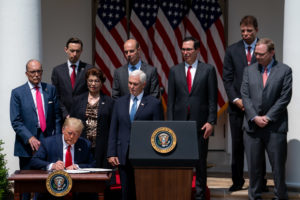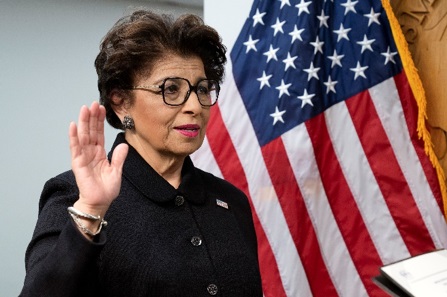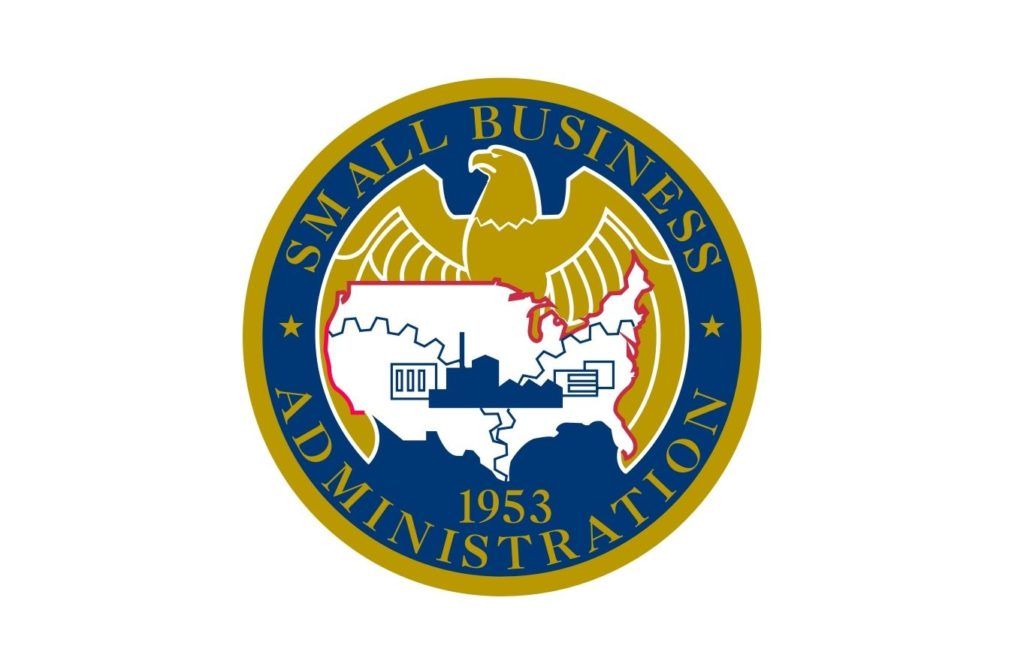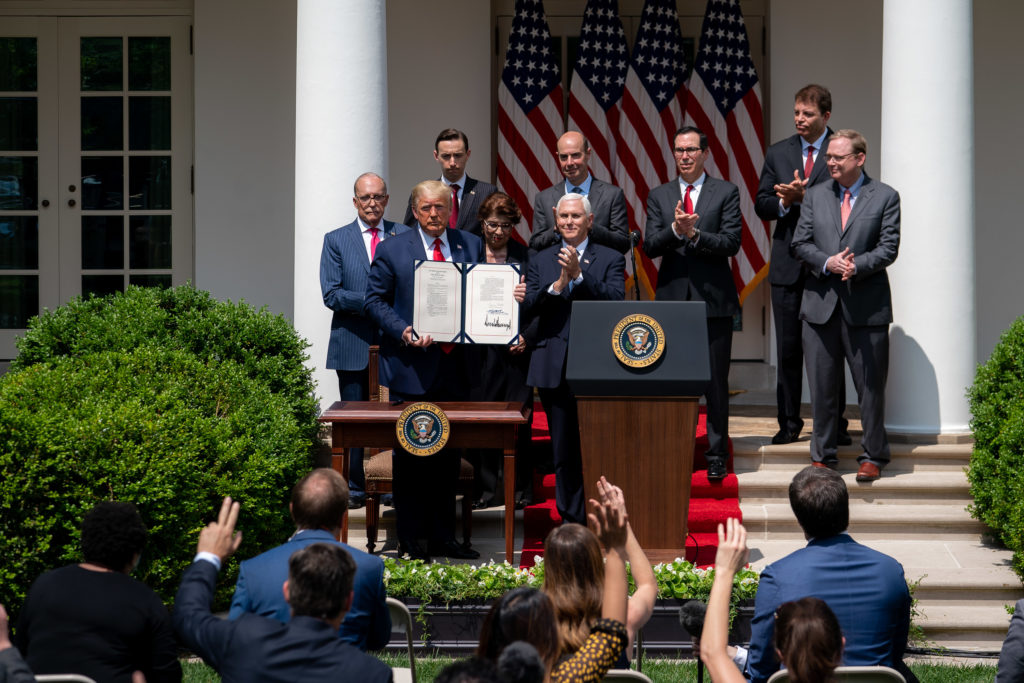
SBA describes Flexibility Act-related changes to PPP rules as time to apply wanes
By onBusiness Practices | Legal | Market Trends
The Small Business Administration on Friday explained how Congress’ Paycheck Protection Program Flexibility Act would — and wouldn’t — modify new and existing small business PPP loans.
PPP post-Flexibility Act
The nearly $660 billion PPP initiative started by the CARES Act and modified by the PPP Flexibility Act helped small businesses and employees weather the economic slump from the COVID-19 pandemic response by permitting cheap, loose and forgivable credit.
It involves 1 percent SBA-guaranteed loans of amounts worth up to about 2.5 months of payroll, capped at $10 million. Individual employee earnings above $100,000 don’t count as payroll when calculating this amount.
PPP loan recipients businesses can spend the money on payroll (which is also defined to include costs like benefits), mortgage or other pre-existing debt interest, rent, utilities.
The SBA on Friday said that spending the money on “other allowable uses described in section 7(a) of the Small Business Act (15 U.S.C. 636(a))” would be OK, but the form for PPP borrowers only mentioned the uses from the prior sentence. You might want to run that contradiction by an accountant or attorney.
If companies spend at least 60 percent of the loan dollars on payroll and the rest on payroll or the other eligible expenses, the SBA will forgive all of their debt and interest. (It had been 75-25 until the PPP Flexibility Act.)
The SBA and Treasury Department also indicated June 8 and in its interim final rule Friday that even if 60 percent of the funds weren’t spent on payroll during the defined period for forgiveness, business still have to spend 60 percent of their PPP money overall on payroll.
As the SBA and Treasury Department put it on June 8, their new rule would “Lower the requirements that 75 percent of a borrower’s loan proceeds must be used for payroll costs and that 75 percent of the loan forgiveness amount must have been spent on payroll costs during the 24-week loan forgiveness covered period to 60 percent for each of these requirements. If a borrower uses less than 60 percent of the loan amount for payroll costs during the forgiveness covered period, the borrower will continue to be eligible for partial loan forgiveness, subject to at least 60 percent of the loan forgiveness amount having been used for payroll costs.”
The business must also restore employee pay and full-time employee headcount to sufficient pre-pandemic levels. Pay cuts of more than 25 percent remaining after that date reduce the proportion of the loan which will be forgiven, as do persisting decreases in full-time employees.
Maturity: Still 2 years for many
The initial CARES Act had merely established a maximum PPP loan maturity of 10 years. As Congress at that point hadn’t specified a minimum, the SBA ruled ahead of the PPP launch April 3 that all the PPP loans would carry two-year terms.
Congress in the PPP Flexibility Act enacted a minimum maturity of five years on the debt, but made this effective as of the bill’s June 5 enactment, according to the SBA.
All loans prior to June 5 still come due in two years, but “borrowers and lenders may mutually agree to extend the maturity of such loans to five years,” the SBA wrote Friday. It said Congress permitted this type of negotiation in the bill.
All loans June 5 and later will only receive the minimum five-year maturity, the SBA said.
“Specifically, the considerable economic disruption caused by the coronavirus is expected to abate well before the five-year maturity date such that borrowers will be able to resume business operations and pay off any outstanding balances on their PPP loans,” the SBA wrote Friday.
Deferrals
The PPP Flexibility Act allows borrowers to defer payments “including payment of principal, interest, and fees, until the date on which the amount of forgiveness … is remitted to the lender.” The CARES Act had set overall deferral to between six months to a year; the SBA chose to make it six months.
The SBA on Friday said borrowers could defer payment for at least a year. They don’t have to pay anything during the loan “covered period” nor do they for the 10 months after that duration ended. The covered period — the amount of time a business has to spend their PPP money — can be either eight weeks or 24 weeks after disbursement. Anyone with a loan prior to June 5 can choose either length; everyone else gets 24 weeks.)
If the borrower submits a forgiveness application within those 10 months, they may continue to defer payments until the SBA either forgives some or all of the loan or denies it.
“For example, if a borrower’s PPP loan is disbursed on June 25, 2020, the 24-week period ends on December 10, 2020,” the SBA wrote. “If the borrower does not submit a loan forgiveness application to its lender by October 10, 2021, the borrower must begin making payments on or after October 10, 2021.”

Small Business Administration Administrator Jovita Carranza is sworn in. (Provided by Small Business Administration)
Proportional forgiveness
The SBA also said it would proceed under the assumption that Congress’ 60-40 split rule didn’t bar businesses who failed to meet the 60 percent payroll threshold from all forgiveness entirely.
“While the Flexibility Act provides that a borrower shall use at least 60 percent of the PPP loan for payroll costs to receive loan forgiveness, the Administrator, in consultation with the Secretary, interprets this requirement as a proportional limit on nonpayroll costs as a share of the borrower’s loan forgiveness amount, rather than as a threshold for receiving any loan forgiveness,” the SBA wrote. “This interpretation is consistent with the new safe harbor in the Flexibility Act. The new safe harbor provides that if a borrower is unable to rehire previously employed individuals or similarly qualified employees, the borrower will not have its loan forgiveness amount reduced based on the reduction in full-time equivalent employees. It would be incongruous to interpret the Flexibility Act’s 60 percent requirement as a threshold for receiving any loan forgiveness, because in some cases it would directly conflict with the flexibility provided by the new safe harbor. Further, the 60 percent requirement in the Flexibility Act was enacted against the backdrop of SBA’s existing rules governing the PPP, which Congress was aware of and which provided for proportional reductions in loan forgiveness for borrowers that used less than 75% of their loan amount during the eight-week covered period for payroll costs. In addition, this interpretation of the 60 percent requirement under the Flexibility Act is most consistent with Congress’s purpose in that legislation – namely, to increase the flexibility provided to borrowers related to PPP loan forgiveness.”
The agency said it will forgive a proportional amount of a loan that fails to meet the threshold as follows:
For example, if a borrower uses 59 percent of its PPP loan for payroll costs, it will not receive the full amount of loan forgiveness it might otherwise be eligible to receive. Instead, the borrower will receive partial loan forgiveness, based on the requirement that 60 percent of the forgiveness amount must be attributable to payroll costs. For example, if a borrower receives a $100,000 PPP loan, and during the covered period the borrower spends $54,000 (or 54 percent) of its loan on payroll costs, then because the borrower used less than 60 percent of its loan on payroll costs, the maximum amount of loan forgiveness the borrower may receive is $90,000 (with $54,000 in payroll costs constituting 60 percent of the forgiveness amount and $36,000 in nonpayroll costs constituting 40 percent of the forgiveness amount).
Felonies
The SBA also made it easier for entrepreneurs with certain felonies to obtain loans.
“In addition, as an exercise of SBA’s policy discretion in furtherance of President Trump’s leadership and bipartisan support on criminal justice reform, the eligibility threshold for those with felony criminal histories has been changed,” the SBA and Treasury said June 12. “The look-back period has been reduced from 5 years to 1 year to determine eligibility for applicants, or owners of applicants, who, for non-financial felonies, have (1) been convicted, (2) pleaded guilty, (3) pleaded nolo contendere, or (4) been placed on any form of parole or probation (including probation before judgment). The period remains 5 years for felonies involving fraud, bribery, embezzlement, or a false statement in a loan application or an application for federal financial assistance. The application also eliminates pretrial diversion status as a criterion affecting eligibility.”
“The First Interim Final Rule provided, among other things, that a PPP loan will not be approved if an owner of 20 percent or more of the equity of the applicant has been convicted of a felony within the last five years,” the SBA wrote June 12. “After further consideration, the Administrator, in consultation with the Secretary of the Treasury (the Secretary), has determined that a shorter timeframe for felonies that do not involve fraud, bribery, embezzlement, or a false statement in a loan application or an application for federal financial assistance is more consistent with Congressional intent to provide relief to small businesses and also promotes the important policies underlying the First Step Act of 2018 (Pub. L. 115-391).”
Time running out
The agency also mentioned that its authority to guarantee new Paycheck Protection Program loans will expire June 30, which means any straggler businesses who still need the money had better hustle to borrow it.
Though America is reopening and miles driven resuming, the effects of the COVID-19 pandemic and response might linger enough that some body shops could meet the PPP criteria to take out a loan before the deadline. Borrowers must certify in good faith that “Current economic uncertainty makes this loan request necessary to support the ongoing operations of the Applicant,” among other conditions. (Consult with a qualified professional such as an attorney or accountant to see if you would meet that threshold.)
As of 5 p.m. Monday, 5,455 lenders had issued nearly 4.6 million PPP loans worth nearly $512.6 billion combined. The average loan came in at $111,667.
More information:
Small Business Administration, June 12, 2020
SBA felony revision to PPP program
SBA, June 12, 2020
SBA and Treasury Department, June 8, 2020
SBA, June 12, 2020
SBA, June 1, 2020
Small Business Administration Paycheck Protection Program webpage
Images:
Republican President Donald Trump signs House Resolution 7010, the Paycheck Protection Program Flexibility Act, June 5, 2020. (Tia Dufour/White House)
The Small Business Administration seal is shown. (Provided by U.S. government)
Small Business Administration Administrator Jovita Carranza is sworn in. (Provided by Small Business Administration)
Republican President Donald Trump shows the signed House Resolution 7010, the Paycheck Protection Program Flexibility Act, at a June 5, 2020, news conference. (Tia Dufour/White House)


